
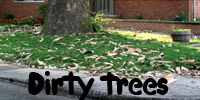
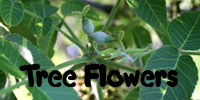
|
Dirty trees
American sycamore, sweetgum, buckeye,
Siberian elm, and silver maple
There is a magnificent American sycamore (Platanus occidentalis)
growing alongside Henderson Avenue just west of its intersection with
North High St. in Columbus. American sycamores, whose girth can be
greater than that any other eastern North American tree (early settlers
sometimes lived in hollow sycamores) manage to persist in urban areas,
remnants of the day when these neighborhoods were not so urban. Urban
foresters nowadays frown upon having such "forest giants" as
these, or tulip-tree, or silver maple, in the city. Sycamores are well
known for having bark that peels off, exposing lighter, almost white,
bark beneath.
American sycamore July 18, 2006, Columbus OH.
Shed bark of American sycamore July 18, 2006, Columbus OH. The large piece looks like a face.
In fruit, Amercian sycamore produces inch-wide globe-shaped clusters of
one-seeded fruits (achenes) tipped by a cluster of tawny hairs that
enable them to drift in the wind. Starting in late winter, and
extending into early spring, the fruits break apart and masses of
them accumulate near the trees.
Hairy achenes of American sycamore, along with flat samaras of American elm, mid-May, Orange Rd and Rte 315, Delaware OH.
The early American botanist William Bartram correctly pointed out that Sweetgum (Liquidambar styraciflua,
family Hamamelidacae) is a tree that you would not want to
dance beneath barefoot! Sweetgum is well known as the source
of spherical spiny clusters of capsules, one of which is shown
below along with a lot more sweetgum bud scales that fell on a
1994 Honda Civic Del Sol in late April..
Sweetgum cluster of capsules and bud scales, April 26, 2006.
Seetgum
is monoecious, i.e., it produces unisexual flowers, with both types
found on on the same tree. After they have released their pollen,
branched clusters of male flower heads fall to the ground.
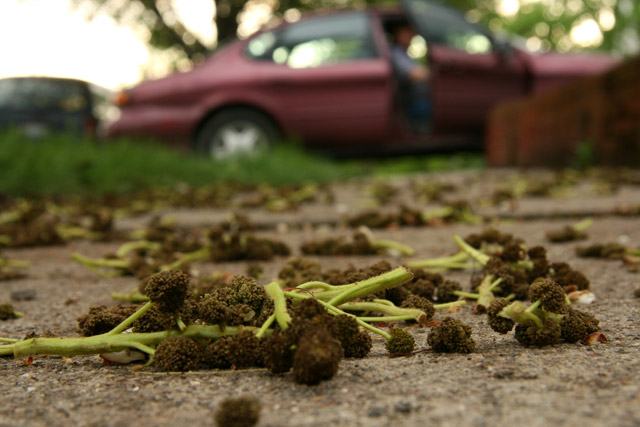
Sweetgum staminate flower clusters, May 2, 2008, Columbus, OH
The beloved Ohio buckeye, Aesculus glabra (Family
Hippocastanaceae) can be quite the litterbug too. Many plants,
including buckeye, produce many more flowers than fruits, and then initiate
many more fruits than they finally end up maturing. Aborted flowers and
fruits are scattered annually on buckeye-lined Powell Road in
Powell, Ohio.
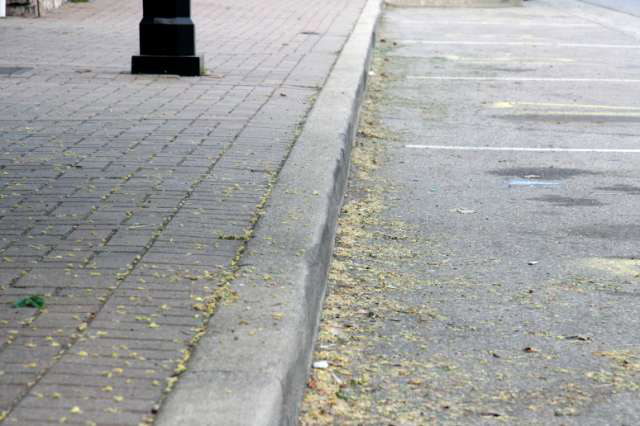
Road adorned with fallen buckeye flowers, May 10, 2006, Powell, Ohio
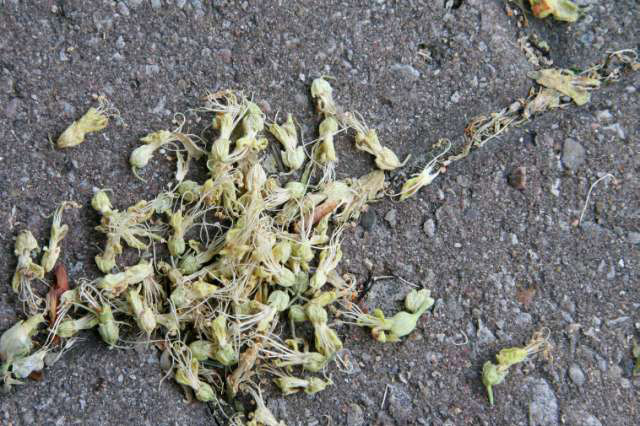
Fallen buckeye flowers, May 10, 2006, Powell, Ohio
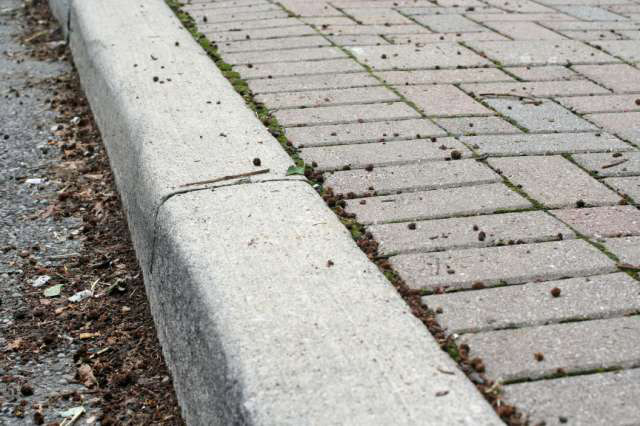
Sidewalk adorned with immature buckeye fruits, June 23, 2006.
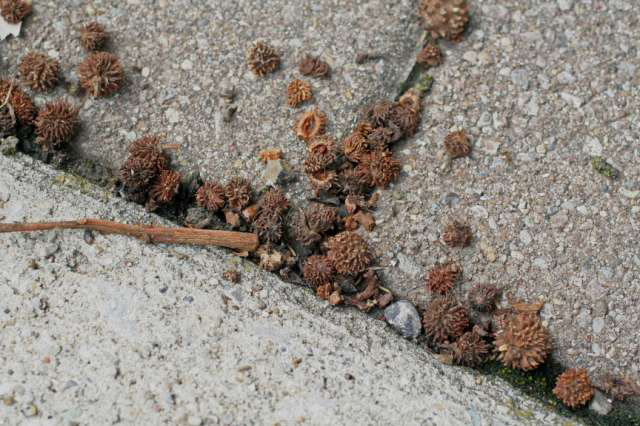
Immature buckeye fruits, June 23, 2006, Powell, Ohio.
In the American midwest, just when it
seems summer is finally upon us, it starts snowing! The "snow" is the
wind-blown seeds of the aptly-named eastern cottonwood (Populus deltoides, family Salicaceae) that sometimes forms drifts as shown here along Lake Erie in Mentor, OH.
Drifted windblown seeds of eastern cottonwood, June 2002, Mentor, Ashtabula County, OH.
Elms produce wind-disseminated one-seeded
fruits (samaras). On the campus of Ohio State University in Columbus,
there are many Siberian elm (Ulmus pumila, family Ulmaceae) trees planted perhaps
as a subsitute for American elms lost to Dutch elm disease. They are
prolific fruit producers, and they collect along the curbs in parking
lots near the trees, as shown here in front of Aronoff Laboratory.
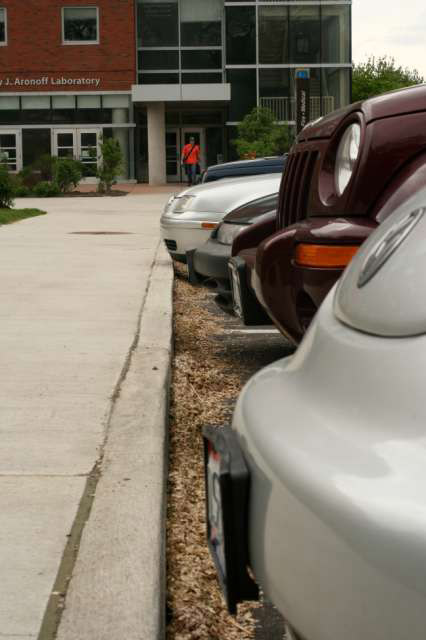
Siberian elm fruits along curb at edge of parking lot, OSU Columbus campus, May 15, 2008.
In a more natural setting by the Olentangy River, the native red elm (also called "slippery elm"), Ulmus rubra, is
fairly common. Beneath a large tree, an inch-thick mat of fruits
covered the edge of the road bordering Delawanda Park in Columbus.
Notice that these fruits are larger than those of American elm (shown above with American sycamore), and
they have smoth, not hairy, edges.
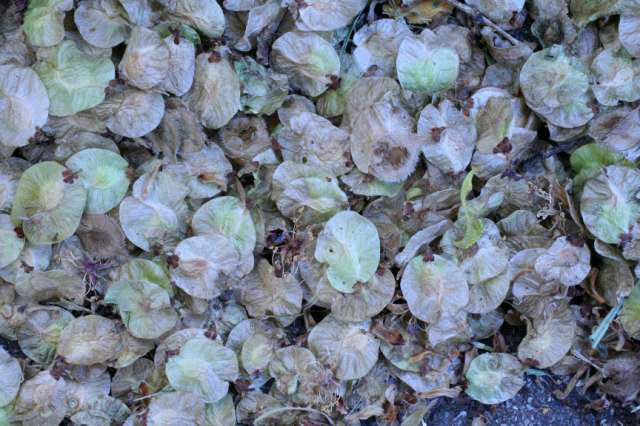
Red elm fruits on the ground, May 6, 2006.
Speaking of samaras, the most well-known ones are the double "helicopters" of maples. Silver maple (Acer saccharinum, family Aceraceae) fruits early and abundantly.
Silver maple samaras at edge of sidewalk, May 10, 2008
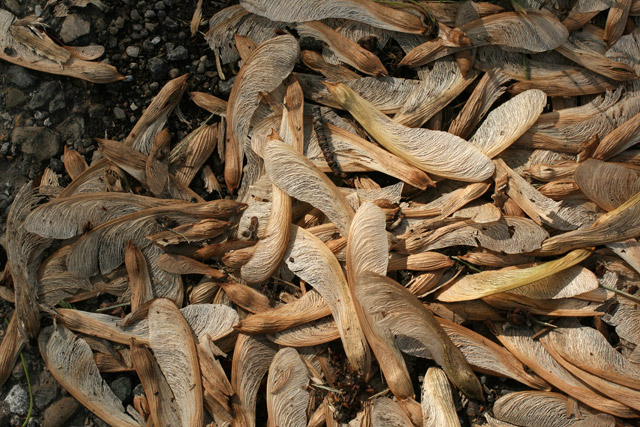
Silver maple samaras, May 10, 2008.
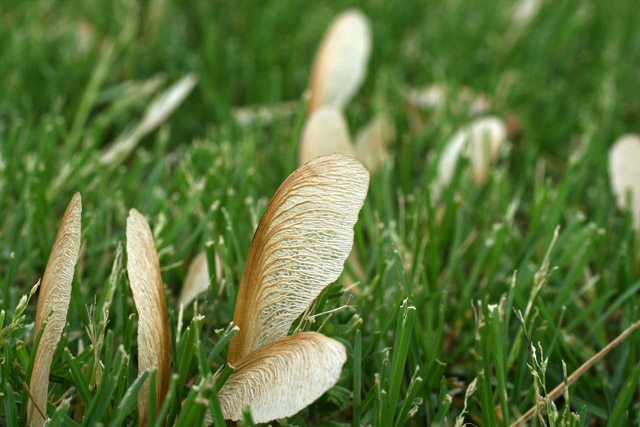
Silver maple samara in grass, in a seemingly ideal position for germination, May 10, 2008.
"Dirty trees" might be a nuisance at
times, but that's a small price to pay for the fascinating glimpse they
provide into the world of plant adaptations. Carbon sequestration is
good too!
|

